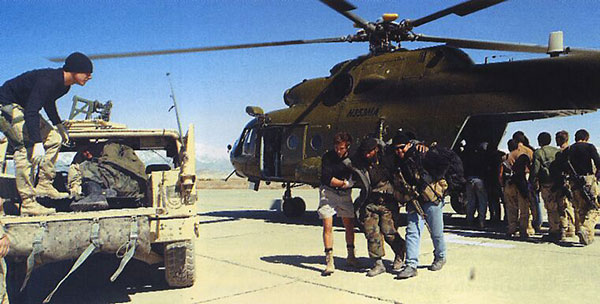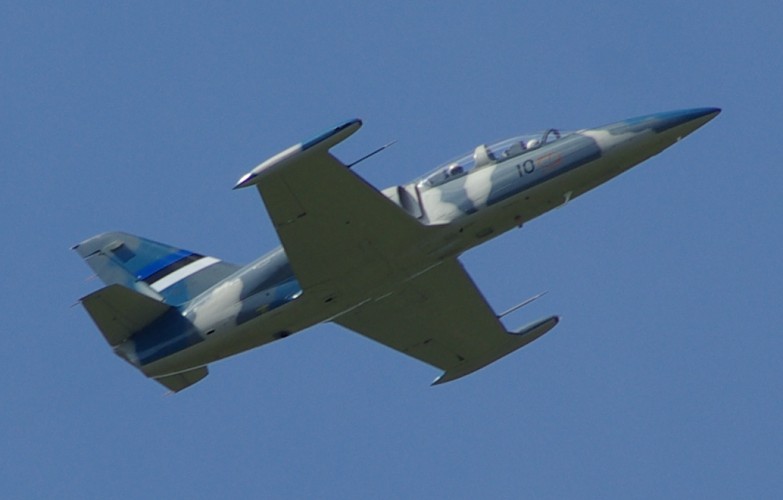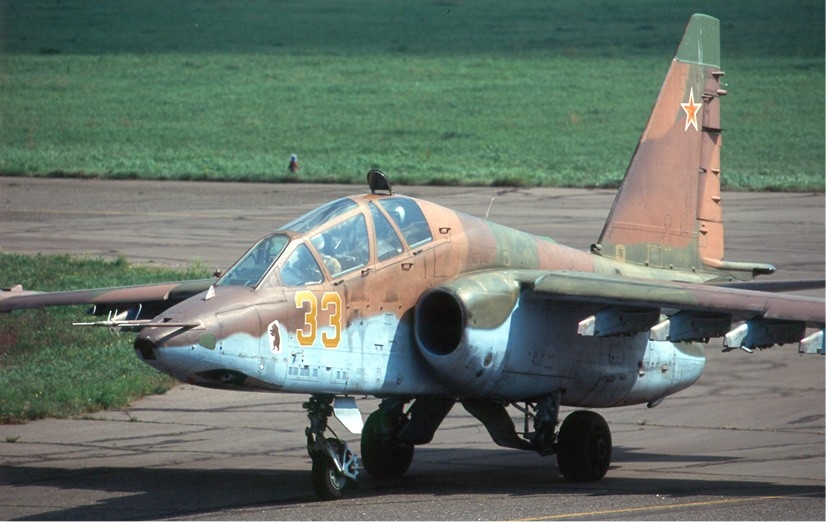|
Balchik Air Base
Balchik Airfield ( bg, Летище Балчик) , is a general aviation airfield and reduced former military airbase in the town of Balchik, northeast Bulgaria, on the Black Sea coast. In August 2011 the Bulgarian government transformed Balchik airbase from a military to a civilian airport and it became part of the assets of the state-owned company Sofia Airport EAD. Due to its strategic location, the former military airfield has been home to different military aviation formations and performed different types of tasks related to the country's defence. Despite major structural changes in the Bulgarian Air Force, the disbandment and closure of military airbases, Balchik airbase continues to perform reduced defence-related tasks. The intention to organize civil flights at Balchik airfield and its use as both a military airbase and a civilian airport established Balchik as a non-commercial regional transport hub, providing jobs and better use of the resources in this region. On 3 ... [...More Info...] [...Related Items...] OR: [Wikipedia] [Google] [Baidu] |
Balchik
Balchik ( bg, Балчик ; ro, Balcic) is a Black Sea coastal town and seaside resort in the Southern Dobruja area of northeastern Bulgaria. It is in Dobrich Province, 35 km southeast of Dobrich and 42 km northeast of Varna. It sprawls scenically along hilly terraces descending from the Dobruja plateau to the sea, and is often called "The White City" because of its white hills. Etymology Balchik is named after the medieval ruler Balik, brother of Dobrotitsa, after whom the city of Dobrich is named. History Founded as a Thracian settlement, it was later colonised by the Ionian ancient Greeks with the name Krounoi ( grc, Κρουνοί) (renamed as Dionysopolis ( grc, Διονυσόπολις), after the discovery of a statue of Dionysus in the sea). Later became a Greek-Byzantine and Bulgarian fortress. Under the Ottoman Empire, the town came to be known with its present name, which perhaps derived from a Gagauz word meaning "small town". Another opinion is ... [...More Info...] [...Related Items...] OR: [Wikipedia] [Google] [Baidu] |
Schengen Area
The Schengen Area ( , ) is an area comprising 27 European countries that have officially abolished all passport and all other types of border control at their mutual borders. Being an element within the wider area of freedom, security and justice policy of the EU, it mostly functions as a single jurisdiction under visa policies in the European Union, a common visa policy for international travel purposes. The area is named after the 1985 Schengen Agreement and the 1990 Schengen Convention, both signed in Schengen, Luxembourg. Of the 27 EU member states of the European Union, member states, 23 participate in the Schengen Area. Of the five EU members that are not part of the Schengen Area, three—Bulgaria and the European Union, Bulgaria, Cyprus and the European Union, Cyprus and Romania and the European Union, Romania—are legally obligated to join the area in the future; Croatia has been approved to join on January 1, 2023; Ireland and the European Union, Ireland maintains ... [...More Info...] [...Related Items...] OR: [Wikipedia] [Google] [Baidu] |
Air-sea Rescue
Air-sea rescue (ASR or A/SR, also known as sea-air rescue), and aeronautical and maritime search and rescue (AMSAR) by the ICAO and International Maritime Organization, IMO, is the coordinated search and rescue (SAR) of the survivors of emergency water landings as well as people who have survived the loss of their seagoing vessel. ASR can involve a wide variety of resources including seaplanes, helicopters, submarines, rescue boats and ships. Specialized equipment and techniques have been developed. Both military and civilian units can perform air-sea rescue. Its principles are laid out in the International Aeronautical and Maritime Search and Rescue Manual. The International Convention on Maritime Search and Rescue is the legal framework that applies to international air-sea rescue. Air-sea rescue operations carried out during times of conflict have been credited with saving valuable trained and experienced airmen. Moreover, the knowledge that such operations are being carried o ... [...More Info...] [...Related Items...] OR: [Wikipedia] [Google] [Baidu] |
Airlift
An airlift is the organized delivery of supplies or personnel primarily via military transport aircraft. Airlifting consists of two distinct types: strategic and tactical. Typically, strategic airlifting involves moving material long distances (such as across or off the continent or theater), whereas a tactical airlift focuses on deploying resources and material into a specific location with high precision. Depending on the situation, airlifted supplies can be delivered by a variety of means. When the destination and surrounding airspace is considered secure, the aircraft will land at an appropriate airport or airbase to have its cargo unloaded on the ground. When landing the craft or distributing the supplies to a certain area from a landing zone by surface transportation is not an option, the cargo aircraft can drop them in mid-flight using parachutes attached to the supply containers in question. When there is a broad area available where the intended receivers have c ... [...More Info...] [...Related Items...] OR: [Wikipedia] [Google] [Baidu] |
Eurocopter AS532 Cougar
The Eurocopter AS532 Cougar (now Airbus Helicopters H215M) is a twin-engine, medium-weight, multipurpose helicopter developed by France. The AS532 is a development and upgrade of the Aérospatiale SA 330 Puma in its militarized form. Its civilian counterpart is the Eurocopter AS332 Super Puma. The AS532 has been further developed as the Eurocopter EC725. Design and development The AS332 Super Puma, designed as a growth version to replace the SA 330 Puma, first flew in September 1977. It was fitted with two 1,330 kW Turbomeca Makila 1A1 turboshaft engines, composite rotor blades, improved landing gear and a modified tailfin. In 1990 all military Super Puma designations were changed from "AS 332" to "AS 532 Cougar" to distinguish between the civil and military variants of the helicopter. Canada had considered purchasing the Cougar to replace their CH-113 Labrador, but opted in the end to purchase the CH-149 Cormorant. In 2012 France began a €288.8m project (€11.1m/un ... [...More Info...] [...Related Items...] OR: [Wikipedia] [Google] [Baidu] |
Mil Mi-17
The Mil Mi-17 ( NATO reporting name: Hip) is a Soviet-designed Russian military helicopter family introduced in 1975 (Mi-8M), continuing in production at two factories, in Kazan and Ulan-Ude. It is known as the Mi-8M series in Russian service. The helicopter is mostly used as a medium twin-turbine transport helicopter, as well as an armed gunship version. Development Developed from the basic Mi-8 airframe, the Mi-17 was fitted with the larger Klimov TV3-117MT engines, rotors, and transmission developed for the Mi-14, along with fuselage improvements for heavier loads. Optional engines for "hot and high" conditions are the 1545 kW (2070 shp) Isotov TV3-117VM. Recent exports to China and Venezuela for use in high mountains have the new Klimov VK-2500 version of the Klimov TV3-117 engine with FADEC control. The designation Mi-17 is for export; Russian armed forces call it Mi-8MT. The Mi-17 can be recognized because it has the tail rotor on the port side instead of the s ... [...More Info...] [...Related Items...] OR: [Wikipedia] [Google] [Baidu] |
Mil Mi-24
The Mil Mi-24 (russian: Миль Ми-24; NATO reporting name: Hind) is a large helicopter gunship, attack helicopter and low-capacity troop transport with room for eight passengers. It is produced by Mil Moscow Helicopter Plant and has been operated since 1972 by the Soviet Air Force and its successors, along with 48 other nations. In NATO circles, the export versions, Mi-25 and Mi-35, are denoted with a letter suffix as "Hind D" and "Hind E". Soviet pilots called the Mi-24 the "flying tank" (russian: летающий танк, letayushchiy tank, links=no), a term used historically with the famous World War II Soviet Il-2 ''Shturmovik'' armored ground attack aircraft. More common unofficial nicknames were "Galina" (or "Galya"), "Crocodile" (russian: Крокодил, Krokodil, links=no), due to the helicopter's camouflage scheme, and "Drinking Glass" (russian: Стакан, Stakan, links=no), because of the flat glass plates that surround earlier Mi-24 variants' cockpits. ... [...More Info...] [...Related Items...] OR: [Wikipedia] [Google] [Baidu] |
Alenia C-27J Spartan
The Alenia C-27J Spartan is a military transport aircraft developed and manufactured by Leonardo's Aircraft Division (formerly Alenia Aermacchi until 2016). It is an advanced derivative of Alenia Aeronautica's earlier G.222 (C-27A Spartan in U.S. service), equipped with the engines and various other systems also used on the larger Lockheed Martin C-130J Super Hercules. In addition to the standard transport configuration, specialized variants of the C-27J have been developed for maritime patrol, search and rescue, C3 ISR (command, control, communications, intelligence, surveillance and reconnaissance), fire support/ground-attack and electronic warfare missions. In 2007, the C-27J was selected as the ''Joint Cargo Aircraft'' (JCA) for the United States military; these were produced in an international teaming arrangement under which L-3 Communications served as the prime contractor. In 2012, the United States Air Force (USAF) elected to retire the C-27J after only a short servic ... [...More Info...] [...Related Items...] OR: [Wikipedia] [Google] [Baidu] |
Aero L-39 Albatros
The Aero L-39 Albatros is a high-performance jet trainer designed and produced in Czechoslovakia by Aero Vodochody. It is the most widely used jet trainer in the world; in addition to performing basic and advanced pilot training, it has also flown combat missions in a light-attack role. Unusually, the aircraft never received a NATO reporting name. The L-39 Albatros was designed during the 1960s as a successor to the Aero L-29 Delfín, an early jet-powered principal training aircraft. Performing its maiden flight on 4 November 1968, it became the first trainer aircraft in the world to be equipped with a turbofan powerplant. Quantity production of the L-39 Albatros proceeded in 1971; one year later, it was formally recognized by the majority of the Warsaw Pact countries as their preferred primary trainer. Accordingly, thousands of L39s would be produced for various military customers in Eastern Europe. Additionally, it was exported to a range of countries across the world both as ... [...More Info...] [...Related Items...] OR: [Wikipedia] [Google] [Baidu] |
Sukhoi Su-25
The Sukhoi Su-25 ''Grach'' (russian: Грач (''rook''); NATO reporting name: Frogfoot) is a subsonic, single-seat, twin-engine jet aircraft developed in the Soviet Union by Sukhoi. It was designed to provide close air support for Soviet Ground Forces. The first prototype made its maiden flight on 22 February 1975. After testing, the aircraft went into series production in 1978 in Tbilisi in the Georgian Soviet Socialist Republic. Early variants included the Su-25UB two-seat trainer, the Su-25BM for target-towing, and the Su-25K for export customers. Some aircraft were upgraded to the Su-25SM standard in 2012. The Su-25T and the Su-25TM (also known as the Su-39) were further developments, not produced in significant numbers. The Su-25, and the Su-34, were the only armoured, fixed-wing aircraft in production in 2007.Gordon and Dawes 2004. Su-25s are in service with Russia, other CIS members, and export customers. Production of the Su-25 ended in 2017 in Russia and 2010 in Ge ... [...More Info...] [...Related Items...] OR: [Wikipedia] [Google] [Baidu] |
Mikoyan MiG-29
The Mikoyan MiG-29 (russian: Микоян МиГ-29; NATO reporting name: Fulcrum) is a twin-engine fighter aircraft designed in the Soviet Union. Developed by the Mikoyan design bureau as an air superiority fighter during the 1970s, the MiG-29, along with the larger Sukhoi Su-27, was developed to counter new U.S. fighters such as the McDonnell Douglas F-15 Eagle and the General Dynamics F-16 Fighting Falcon.Gordon and Davison 2005, p. 9. The MiG-29 entered service with the Soviet Air Forces in 1983. While originally oriented towards combat against any enemy aircraft, many MiG-29s have been furnished as multirole fighters capable of performing a number of different operations, and are commonly outfitted to use a range of air-to-surface armaments and precision munitions. The MiG-29 has been manufactured in several major variants, including the multirole Mikoyan MiG-29M and the navalised Mikoyan MiG-29K; the most advanced member of the family to date is the Mikoyan MiG-35. Later ... [...More Info...] [...Related Items...] OR: [Wikipedia] [Google] [Baidu] |
Aero L-29 Delfín
The Aero L-29 Delfín ( en, Dolphin, NATO reporting name: Maya) is a military jet trainer developed and manufactured by Czechoslovakian aviation manufacturer Aero Vodochody. It is the country's first locally designed and constructed jet aircraft, as well as likely being the biggest aircraft industrial programme to take place in any of the Council for Mutual Economic Assistance (COMECON) countries except the Soviet Union."Selling to Eastern Europe." ''Flight International'', 13 June 1974. p. 174. In response to a sizable requirement for a common jet-propelled trainer to be adopted across the diverse nations of the , Aero decided to embark upon their own desig ... [...More Info...] [...Related Items...] OR: [Wikipedia] [Google] [Baidu] |



.jpg)





